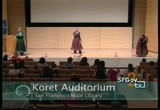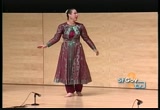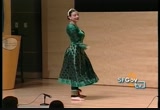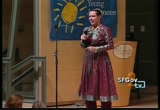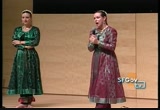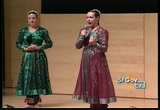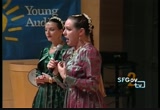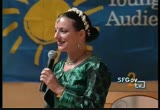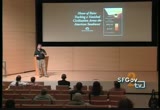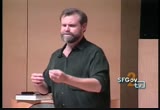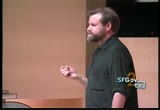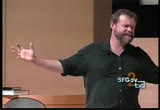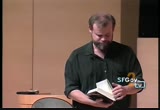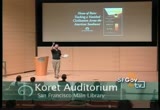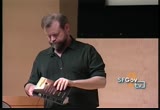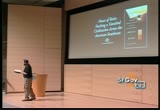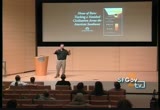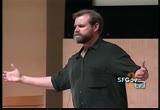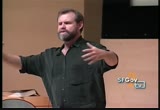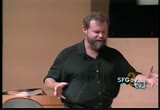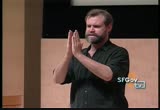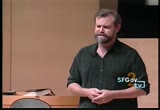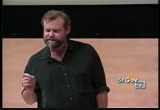tv [untitled] November 2, 2012 3:00am-3:30am PDT
3:00 am
11, 12, 13, 14, 15, 16. 1, 2, 3, 4, 5, 6, 7, you keep counting 16. you guys do this. you will start 5 times 3, 3 times. 1, 2, 3, 4, 5. >> 1, 2, 3, 4, 5, >> 1, 2, 3, 4, 5, pause. >> 1, 2, 3, 4, 5. 1, 2, 3, 4, 5, 1. did we end on your 1? >> whoa, you divided 16 into 3 equal parts. did you know you could do that? >> i'm dizzy. okay. well, we are going to end with a t high within a t high like a
3:01 am
3:03 am
okay. which one of you figured it out? yes. >> 49, hum... >> i can see how you would say that, why do you say that? there is 49 of something. okay. did you notice the turns? the spins? how many were there in one piece? yes. no. yes. 9. how many times did we repeat that? how many times? 3. 9 times 3 -- is 27. we did 27 turns but we were going, 1, 2, 1, 1, 2, 1. that's a sophisticated math concept, you were not wrong. i bet you will grow up to be a mathematician. i will give you my address you
3:04 am
will have to send me your first paycheck because i taught you this. at this point we would like to thank you very much for coming. if you have any questions. i don't know if we want to open it you will for questions. may be just a few? okay. yes. what's your question? >> how do we get in this program? that is a good question. >> it's an interesting question because the answer with the 3 of us is the same. what i want to point out i look like i might be from india when i talk i sound like i'm from america. my parents are from india but i was born in america and i started this dance when i was 18. i was not a baby e. both charlotte and an drea did as
3:05 am
well. charlotte at 15 years and joe airna and i 15 years. that's how we got in this program. we practiced very hard. very, very hard we practiced everyday and we have been been in india practicing 8 times where our teacher is from. yes. >> yes. >> well there are similarities all of southeast asia. we performed in bali with a group. it's a story from the [inaudible] and so the indian
3:06 am
epiics actually the indian epiics for very common in cambodia and bali and thailand and there is a different aesthetic. all southeast asia and asia there are a lot of similarities. >> he is a male entity. he is not -- are you referring to the story? >> it's interesting you should say that. a unique indian concept is one of half male, half female. and that is -- unlike some dances the solo dancer portrays
3:07 am
all of the parts in the story. you can portray a feminine aspect and then masculine aspect with the bow and arrow. the male has to portray feminine and the female has to portray masculine. there is a very fierce dance and a soft sort of dance and every dancer has to learn all those aspects. it's very, you know, my teacher i call him a guru in this art form you have to study very, very hard. you have to learn about all the cultural aspects. he says it's liberating because he enjoys and has to learn to bring up the feminine aspect. he's a strong character it's a
3:08 am
challenge for him and he likes it. the stories are metaphor cal. i don't look at this that this is a man or woman. there are qualities we all have that some of us are in touch with and are not. in our culture we think people should not be people they have be macho and feminine image. every human being inside them has feminine and masculine qualities. one is not good or bad it's a duality you need to be a whole human being in touch of what is going on in society. if everyone danced or got in touch with different sides of them there would be more harmony in the world. yes. >> no, we have a school all
3:09 am
over here. i'm talking so. . we have a school 250 students a school show coming up. she will tell you where you can take classes. >> in our class we teach kids from 5 years old to 55 years and older. our guru is 62 and he dances circles around all of us he's been dancing since he was 9. you can all learn and parents and grandfathers and grand mourths can learn, toochlt we have a special men's class and have classes in san francisco. if you have questions there is an address on the card and our e mail and you can -- or you can come talk to us if you have questions. we would like to say -- and you
3:11 am
. >> good evening and welcome to the san francisco public library. i'm joan jasper, i'm with the department of public exhibitions here at the library. thank you so much for coming to our exhibition tonight with author craig childs. he's been jet setting all over the country promoting his new book, the house of rain. we also want to thank the publishers for bringing craig to us and we also want to thank (inaudible) at the book table at the end of the program. craig childs is a commentator for national public radio's morning edition. he has written noert "new york times", the los angeles times and several magazines. his work has won the spirit of the west award as well as the colorado book award. the book, house of rain, is
3:12 am
craig's latest book. please help me welcome craig childs. . >> hello. i come to you from out of the desert. i'm coming to you from a landscape where once you get an eye for things, 3 grains of sand out of place draw your attention, where everything is brought to bear, where everything is hinged to a story, every drop of rain leaving a dimple in the ground. stories are everywhere out in this landscape. when you walk down into the bottom of the narrow canyons made of sandstone and you put your hands on the sand stone
3:13 am
faces and the smooth shallow scallops that look like champagne glasses, you can feel the shape of the last flood that came through. every place in the desert is a story. every place is a passage way. it's really hard to walk very far in the desert for me because there are so many stories that start opening up and lead you from place to place and place and soon you start picking up the patterns of wind, of rain. you pick up the patterns of people who were there before you because, out there, things seem to last forever. if you put a footprint down in certain places, that footprint will stay for 5 years, maybe even 10 years for somebody who's got a really good eye where you come walking along and you see the slightest depression in the ground and you kneel at it and you figure out that it was a person with
3:14 am
about a size 9 foot walking across the desert 8 years before you. everything out there tells a story. that's why i'm here. because i'm looking for stories. i'm looking for these same kinds of stories that i find in the desert. i came to hear straight from grace cathedral today where i walked into the cathedral and i took off my shoes and walked on the maze that's right in the front, in the center. and i don't know if you've ever been to this place. you have to stop in and walk this maze because it is very much like what it's like to be out in the desert. where you start walking along and you see where you are going eventually. you see the center spot and you know where you are going to be, except you are going away from it and then toward it and then
3:15 am
away from it and all the way around it and then away from it again and back toward it. that's what it's like walking out in the desert in the deep cliffs, in the dunes where you want to go there but there's not a route from here to there. if you had a gps it wouldn't really work because it would point a straight line from here to there because there's a cliff face and to get down you have to go down a series of ledges and to get up you have to go down a narrow canyon where there's a big boulder jammed into the bottom. every place has this backward trail, this labyrinth, leading you around. i was walking arpd this maze for about an hour before coming here and it does the same kind of thing where your mind settles, where you have to pay attention to where you are going. because if you look up for too long at all the passing
3:16 am
architecture, you will forget where you are on the maze. you will end up in the wrong spot. you will end up going the wrong direction and you won't be able to find your way to the center. of course, out in the desert, you can't just walk off of the maze and out the front door and back into the street. out in the desert, you are there. the cliffs stand around you. the mazes are everywhere, passages opening up left and right. to write this book, house of rain, i walked a little bit over a thousand miles in legs from the four corners region from arizona, new mexico, colorado and california meet down to the chijuajua area of
3:17 am
new mexico. there was one excavation along the way i remember out in the desert nears winslow, arizona. the desert out there is just a still life with a few landmarks on the horizon and this empty hole, the little colorado river desert, the painted desert, and we were working on a 500-room pueblo dating back to about 1400 ad. i just remember the wind just hailing down on us for days and you would be working down with trowels inside of a trench and if you stop for too long, the sand would start to fill up your hole again because it was blowing so much and everybody was turned away from the wind. so it looked like some kind of religious thing was going on here, all these people bowed to the ground for days and days tinkering with some unimaginable smallness in front of them while the wind just pushed harder and harder, sand
3:18 am
blasting across you, filling up all the rooms that you just emptied out as if the desert is rolling back over itself. because even where trails are left, trails disappear out there. nothing stays for too long, even the footprints that last for 7 years eventually disappear. i found something out there that i'd like to read to you. it was a site, an archeological site on the colorado plateau, that i ran into a number of years ago. and i've gone down to it a couple of times now. when i first found it, i had been on the river for 7 days in a canoe. and i tied off and broke
3:19 am
through the tamarisk which if you've ever been down on those desert rivers, the tamarisk, the invasive species of plant that runs along the shore line, it makes this jungle, this dry, hard jungle that you just work your way through until you have sticks stabbed into your ears and hair and tamis buds is what they call it, it's the stuff that rains down off these trees and it fills up the back of your shirt. i came up to this flat area and this cliff was there and i saw a piece of pottery on the ground, a broken piece of pottery. if you start looking around, you see broken pieces of pottery that date back 800 years, 900, 1200 years, and i dropped down on my hands and knees when i saw that one and i started brushing away sand until i could see others and i blew the sand away and i could
3:20 am
see the rim of a broken pot. once i saw that, my eye was much sharper and i could see the details around me. i could see a small community, a family of maybe 12 had lived here. when i looked up into the cliff, i saw stacks of rock behind a little spall of the cliff that had stuck out and i realized there was a granary up there. i immediately started for it, climbing hand over hand up the cliff base. my breath tasted hot with discovery. i had found a secret. in past travels i had seen many granaries belonging to the anastasi but they had all been
3:21 am
broken open by pot hunters or even by the residents themselves. this one had been built so no one would see it, like an attic accessed through a hidden floor. the structure was rectangular, like a cupboard. i touched its face with probing, diagnostic fingers, measuring it my eyes. 3 feet tall, 2 feet wide and 3 feet deep. i got up on my haunches and lightly dusted off the granaries roof which was undamaged. for 3,000 years not a breeze had entered this chamber, not an inkling of light. what tightly woven baskets were here, what woven textiles, what
3:22 am
stockpile of cobalt blue and honey-colored seed corn left many years before the boom of spanish rifles. with my fingers i traced through the dust of fallen rock debris on the granary roof. when i'm out there looking for stories and routes and trails, i find things like this. i have so far come upon 3 baskets in the desert and 3 different whole ceramic vessels that people had put underneath ledges and these are things that i don't dig for, i just look in cracks and crannies to see what's left behind. you find pieces of sandals or
3:23 am
sometimes whole sandals. you find little bits of people, signs that in this desert, there were people everywhere and they aren't always small like that. they aren't always a ceramic vessel under a ledge. sometimes they are huge. sometimes they are 3-story dwellings built up into the cracks. they are buildings that they made in the 11th century ad, that the anastasi, the pueblo people made, that a base 5 stories tall. they built at least 400 miles of roads are documented in the four corners area. when i'm saying roads, i'm saying swaugts cut across the desert that are 30 feet wide that have berms about this high on both sides and run absolutely straight. and if they hit a landmark of
3:24 am
some sort, they don't around it, they go up and over it or they go down a cliff and when you are on one of these roads and you get to the edge of a cliff, you can see that it's easier to go down maybe 20 feet over to your left, but they go right down the cliff. and you look down the cliff and there are stairs carved into the cliff face so that this road stays absolutely straight. my take on this is that out in the desert, the ultimate commodity besides water is visibility. and if you set a line across the desert, you are going to see it from everywhere. every butte top, you are going it look down on this desert and see these bold lines coming across the desert and you know that line goes somewhere. you get on it, you stay on it, and it will lead you to what are called great houses, up it 3 acres in size. these great houses are often
3:25 am
aligned in a certain way so that at certain times of year, say summer solstice, light comes through certain windows. i have sat in these at different times of the year and watched this light show start at sunrise where lights start appearing on the walls all around me and you realize this is how you tell time out in this landscape. this is the way they did calendars. this is the way they understood the larger sphere, the moving of the heavens, was by setting up structures that could receive the light in certain ways. i mean, it's happening everywhere. i was just in salt lake city and i took a walk downtown and i saw a pillar that had been built in the last 4 years that a big block of sandstone that i recognized. it was probably wingate sandstone that had been hauled up there from about 200, 250 miles away, but i noticed in
3:26 am
the pillar that was a gap at the bottom and i walked up and looked through the gap and i saw there were some posts in the distance and i looked around and there was a circle around the gap and there were signs around it and then each post a prism in it so that light going through the crack would hit the prism and that light would go to another prism and you would be able to tell the time of year by this object that was built in the last 4 years. and i saw this and i thought, what would archeologists think if they encountered this? they would look at this and say, what civilization was this? what religion drove them to do this? we keep doing the same things over and over again. many researchers believe these archeo-astronomical sites are very specifically designed where other researchers say it's all coincidence. but not long ago i was up at a
3:27 am
place called chimney rock in southwest colorado. and it's over 8,000 feet. and you are up at the southern end ftd rocky mountains and there is this scarp of rock that rises up probably about a thousand feet out of a valley floor and right at the tip of this scarp there are two twin towers of rock. if you get to a certain place on top of this very narrow butte, you can see between these twin towers and there happens to be a great house built between these two towers and every 18.6 years when the moon goes into its northernmost point on the horizon, it rises between those two towers. i was there at the beginning of the last 18.6 year cycle and we stood up there, probably 20 of
3:28 am
us, researchers, forest service people, all gathered at the same spot with cameras and huddled -- it was late december at 8,000 feet and we were all watching this gap. and somebody had done very intricate work to figure out exactly where you need to stand to see the light at exactly the right time. and as we were all gathered up there, i remember this older archeo-astronomer said it's too bad this isn't celebrated any more. this is such a momentous occasion, the moon finally coming up between the gap and nobody celebrates it. i looked at him as we were all bundled together and thought, do you not notice all of us here pressed to the edge watching this one gap just to see a breach of light come through the spot? if this isn't celebrating this moment, i don't know what is, a bunch of researchers coming from all over the country, in fact, all over the world for this event. this is probably what happened a thousand years ago.
3:29 am
i imagined a man very much like the one who had figured out where we needed to stand at what time, or perhaps it was a woman, it was someone who came up and checked this site every day until he sent out the word saying, okay, on this particular day you can put on your feathers and everybody get your stuff, we're going up and it's going to happen. because as the moon was rising i could see he was nervous, pacing back and forth because he wasn't sure if he was exactly right. you use spherical trigonometry to figure it out and he was pacing back and forth and i could see he was going through his numbers going, okay, a lot of people came for this, am i right about this? and i
131 Views
IN COLLECTIONS
SFGTV2: San Francisco Government Television Television Archive
Television Archive  Television Archive News Search Service
Television Archive News Search Service 
Uploaded by TV Archive on

 Live Music Archive
Live Music Archive Librivox Free Audio
Librivox Free Audio Metropolitan Museum
Metropolitan Museum Cleveland Museum of Art
Cleveland Museum of Art Internet Arcade
Internet Arcade Console Living Room
Console Living Room Books to Borrow
Books to Borrow Open Library
Open Library TV News
TV News Understanding 9/11
Understanding 9/11